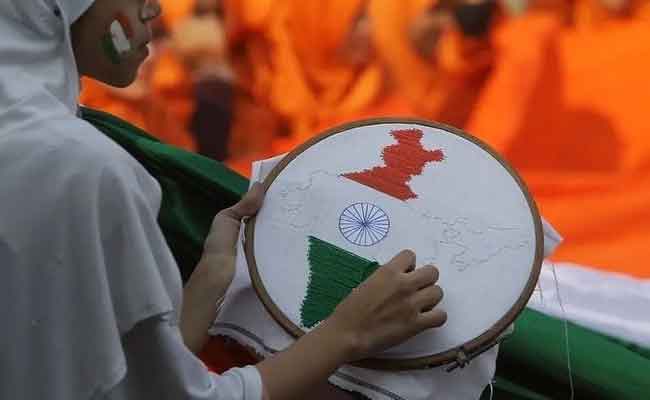Mangaluru: In the wake of heavy downpour in the region which continued for seventh consecutive day on Saturday morning, most of the parts in Ullal have been flooded with water with rivers overflowing in the region.
Places like Alekal, Halekote, Uliya, Millat Nagar, Bastipadu have been severely hit by floods in Ullal.
At Kallapu and Patla several homes were flooded with water on Saturday morning and people were evacuated by boats to safer locations as the rain continued to get heavier on Saturday morning.
Ullal MLA U T Khader visited Kallapu on Saturday morning and took stock of the situation.






Let the Truth be known. If you read VB and like VB, please be a VB Supporter and Help us deliver the Truth to one and all.
New Delhi: The Population Foundation of India (PFI) has raised alarm over the misinterpretation of data from a recent Economic Advisory Council to the Prime Minister (EAC-PM) working paper. The PFI, an independent think tank focusing on population trends and reproductive health, criticized media reports for spreading misinformation about the growth of the Muslim population in India.
The EAC-PM's working paper, titled "Share of Religious Minorities: A Cross-Country Analysis (1950-2015)," examined the population shares of various religious communities across 167 countries, including India.
The EAC-PM's working paper presents shifts in the populations of religious groups by expressing the difference between 1950 and 2015 as a percentage of each group's population in 1950. This method highlights significant changes, such as the Muslim community's rise of 4.25 percentage points, termed as a "43.15% increase" from the 1950 Muslim population. Conversely, Hindus' share declined by 7.82%, Christians' increased by 5.38%, Sikhs' rose by 6.58%, and Parsis' declined by 85%.
However, this methodology wasn't applied to Buddhists and Jains. If it were, it would suggest an extraordinary 1,520% increase in the Buddhist population. Instead, the paper refers to this growth as simply a "noticeable increase," given that their share rose from 0.05% to 0.81% of the total population during this period.
The paper emphasised a nuanced analysis of demographic shifts, illustrating changes in religious groups' populations over time. However, the PFI cautioned against sensationalism and clarified that fertility rates are influenced more by development factors than religious affiliation. They cited successful family planning programs in Muslim-majority countries like Bangladesh and Indonesia as evidence.
The working paper's release coincided with political discourse surrounding India's demographic landscape, with some parties using the statistics to question population trends. The PFI further stressed on the importance of responsible reporting, urging media outlets to provide accurate and contextualised information. It said that media outlets were misreporting the findings contained in the working paper “to spread alarm regarding the growth of the Muslim population”, adding, “Such interpretations are not only inaccurate but also misleading and baseless.”
In light of successive Census data and National Family Health Surveys indicating declining growth rates among all religious groups, the PFI stressed the need for inclusive policies promoting education, income equality, and gender equity.





